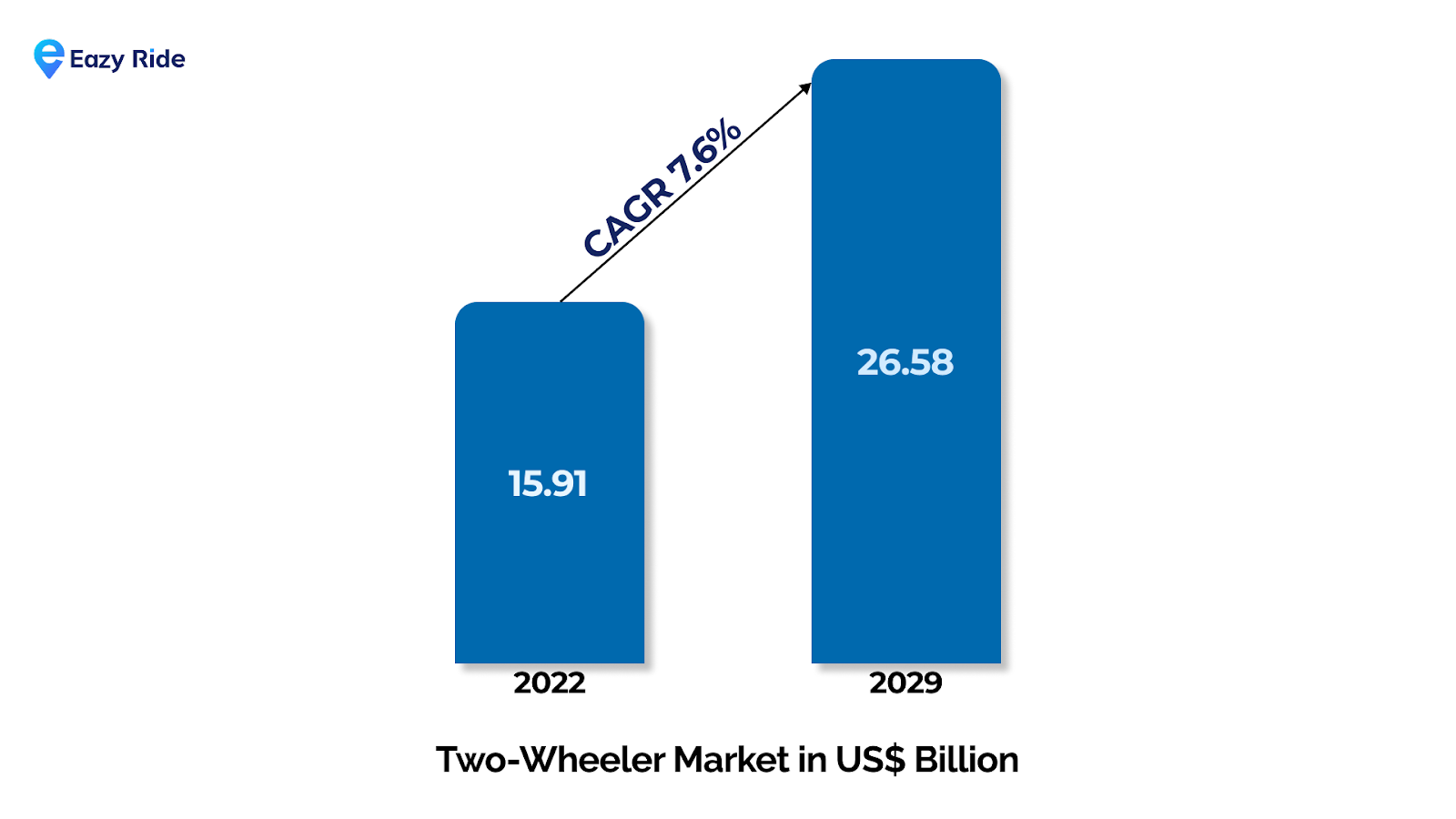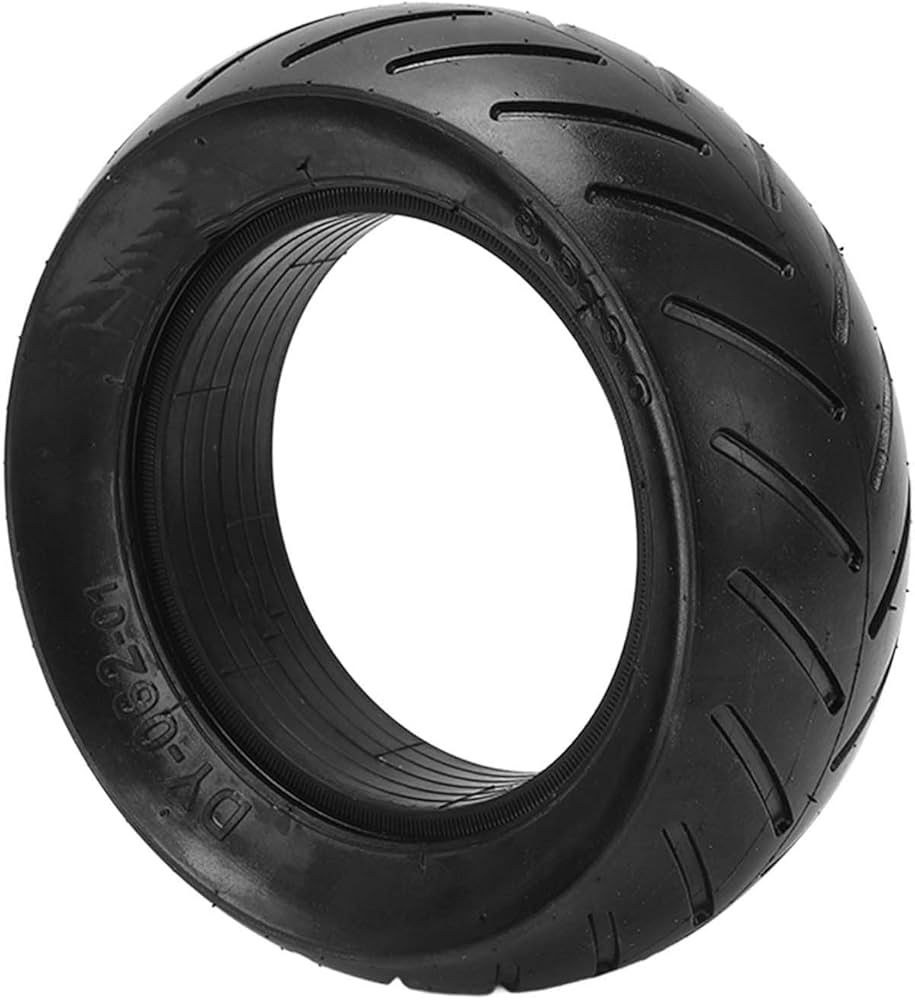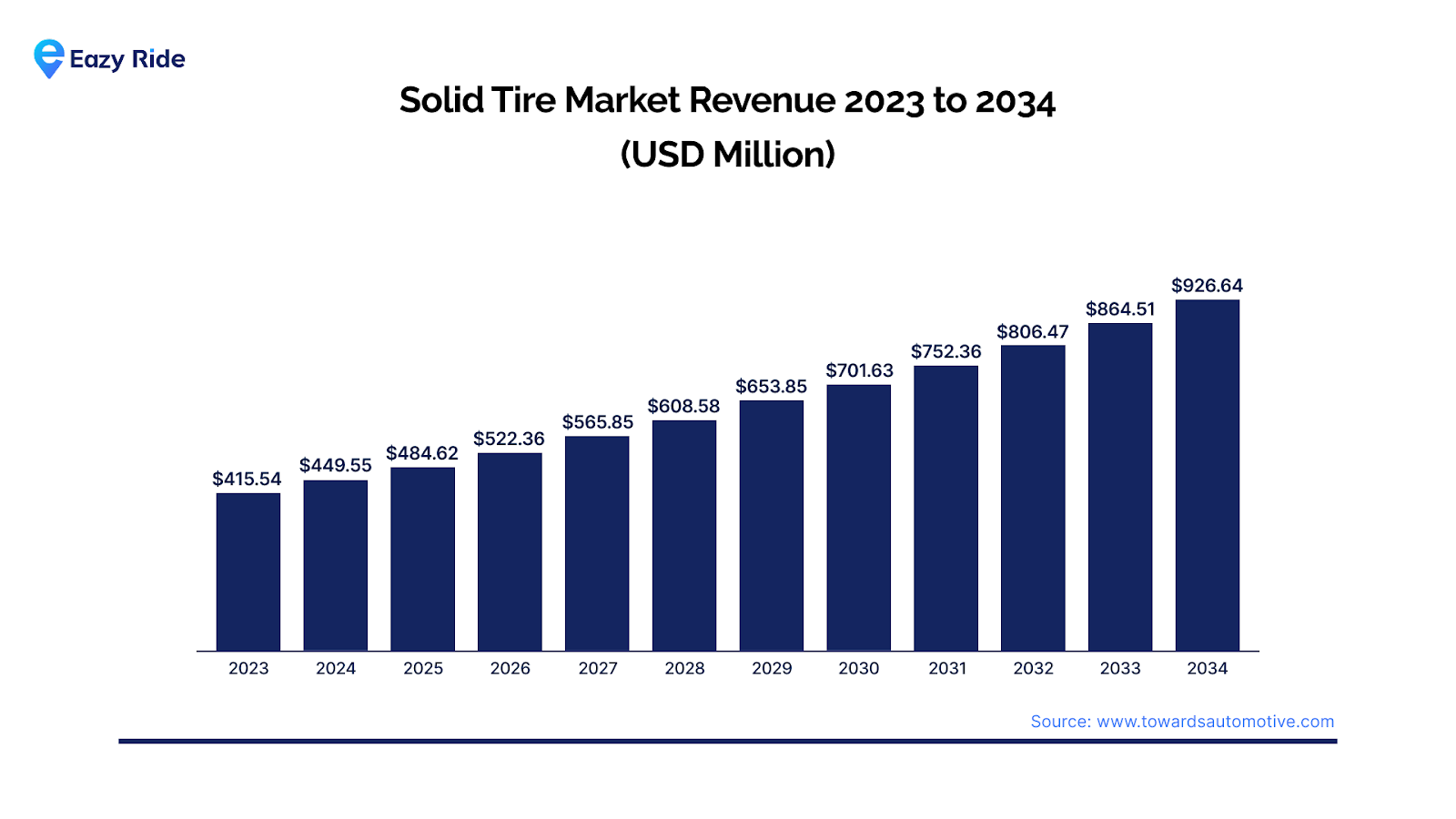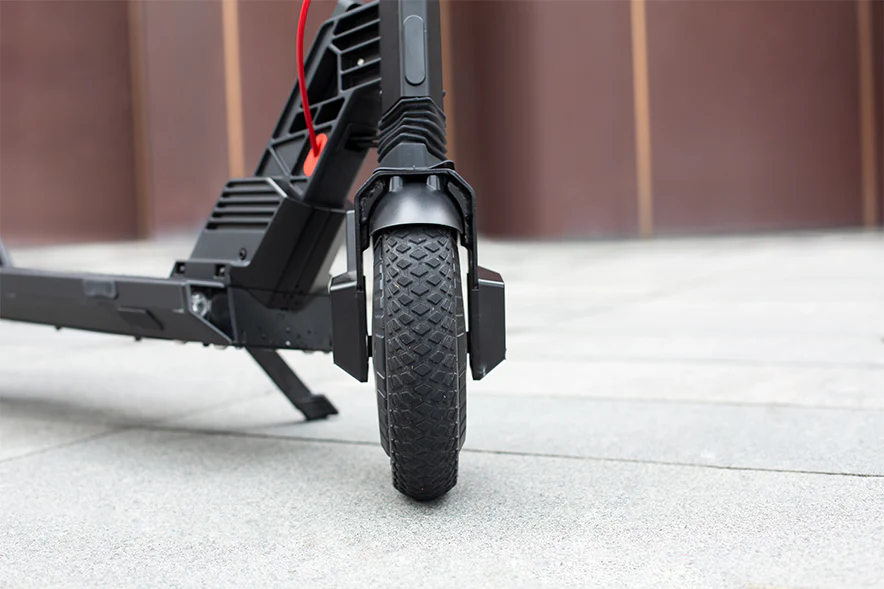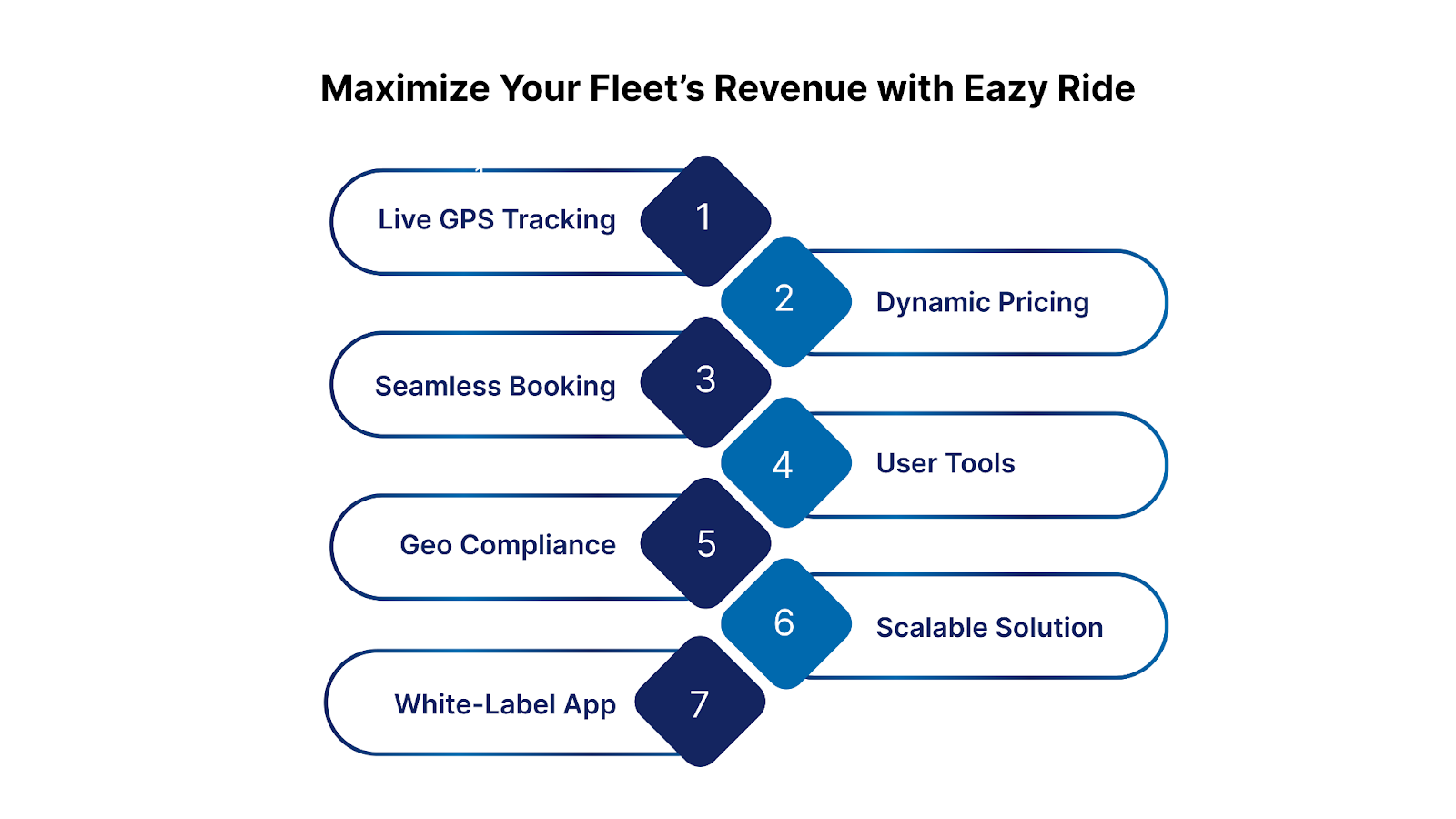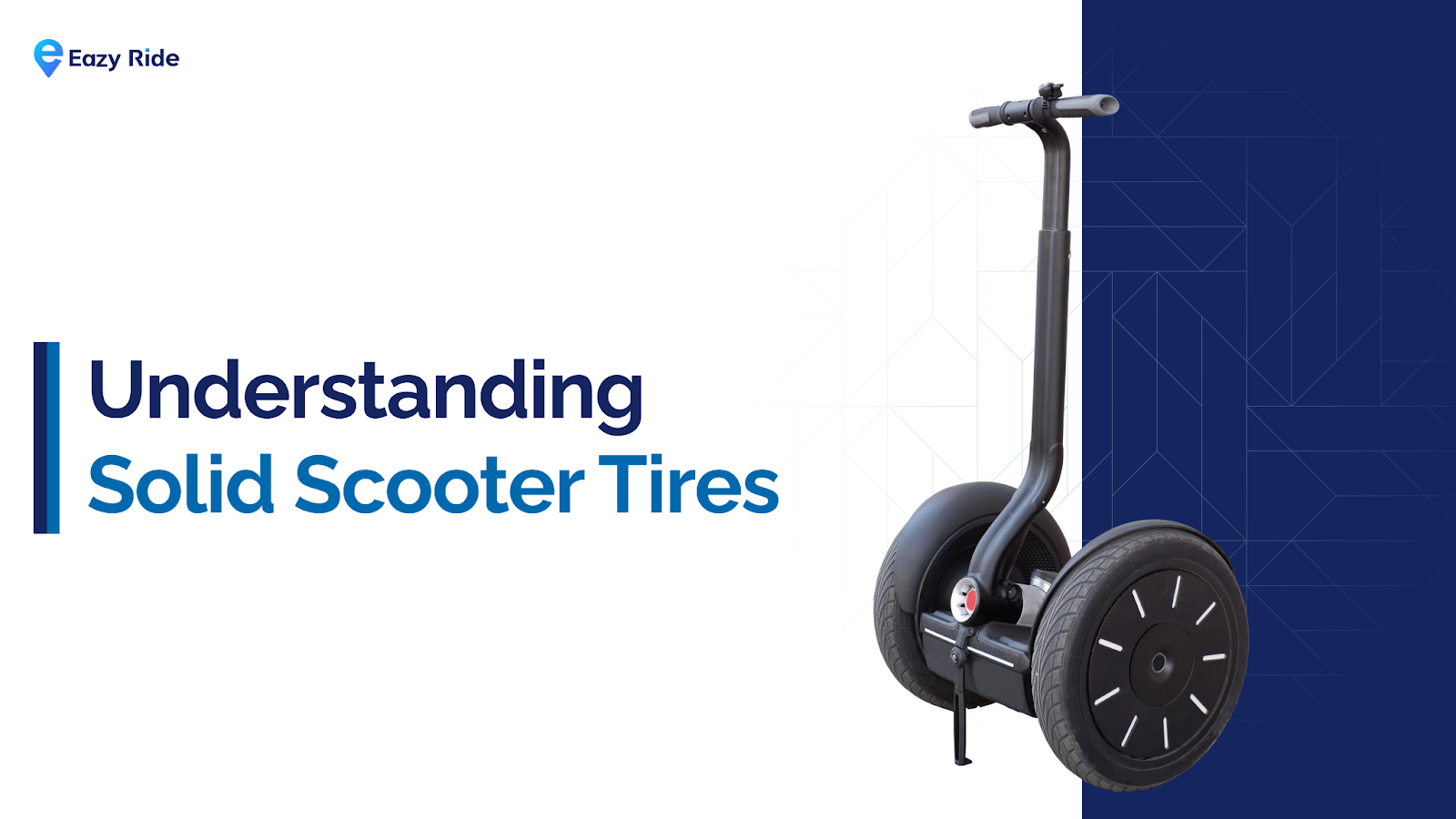 AllAnalytics and research
AllAnalytics and research
Understanding Solid Scooter Tires: Pros & Cons for Fleet Operators
Can switching to solid scooter tires save your fleet from costly flats and downtime, or will the trade-offs slow your growth?
Frequent flats drain budgets, sideline vehicles, and leave riders frustrated. Every repair eats into uptime and lowers revenue. Add rough city streets packed with glass and potholes, and pneumatic tires start to feel like a liability.
On the other hand, solid tires promise fewer repairs, yet many operators worry about heavier wheels and a harsher ride that could dent customer satisfaction. But, are they the right fit for your fleet?
In this blog, we’ll explore the benefits and drawbacks of solid scooter tires, how they can impact your fleet’s efficiency, and whether they’re the best option for your micro-mobility business.
The two-wheeler tire market is projected to reach US $26.58 billion by 2029, growing at a 7.6% CAGR, underscoring how the right tire choice today can drive long-term profitability.
Let’s see if solid scooter tires can keep your fleet rolling smoothly and your riders coming back.
What are Solid Scooter Tires?
Solid scooter tires are durable, airless tires made from robust materials designed to withstand wear and tear without the risk of flats. They feature structures like honeycomb or vented designs, which help absorb vibrations and provide a smoother ride. Unlike traditional tires, these are maintenance-free, eliminating the need for air pressure checks and repairs.
Let’s understand how they compare against traditional pneumatic tires:
Solid Scooter Tires vs Pneumatic Tires: Key Differences
| Feature | Solid Scooter Tires | Pneumatic Tires (Air-Filled) |
| Material | Made from solid rubber or plastic. | Made of rubber filled with air (or sealed with a tube). |
| Maintenance | Requires minimal maintenance. | Requires regular maintenance (air pressure checks, occasional puncture repairs). |
| Puncture Resistance | Puncture-proof, no risk of flats. | Prone to punctures, though tubeless versions are less susceptible. |
| Comfort | It can be a rougher ride due to no shock absorption. | Provides a smoother ride with better shock absorption. |
| Weight | Generally heavier than pneumatic tires. | Lighter, especially tubeless variants. |
| Grip & Traction | Lower grip, especially on rough surfaces. | Better traction on a variety of surfaces, including rough terrain. |
| Ease of Replacement | Difficult to replace without special tools. | Easier to replace, especially for tubed versions. |
| Cost | Lower upfront cost. | Generally, there is a higher cost, especially for high-quality tubeless and pre-sealed options. |
Now that we understand solid scooter tires, let’s explore the different types available and what sets them apart.
Also read: Secrets to Launching a Successful Micro-Mobility Startup
Types of Solid Scooter Tires
Not all solid scooter tires are created equal. The design and material choices can vary significantly, impacting both the ride quality and the tire’s longevity. Let’s explore the two primary types of solid scooter tires so that you can make the best choice for your fleet.
Fully Solid Tires
Fully solid tires are made from a single piece of rubber and offer a very rigid ride. They do not absorb shock, making them ideal for fleet operators who prioritize low maintenance and durability over comfort.
While they eliminate the risk of flats, the ride is far less comfortable, and they are often heavier than pneumatic tires. These tires are usually found on budget scooters or scooters designed for short trips in urban environments.
Solid Tires with Vibration Damping
This type of solid tire is designed with materials and structures, including honeycomb or air-pocket designs, improving ride comfort. While these tires are still airless, they offer better shock absorption than fully solid tires, making them a more comfortable choice for longer urban commutes or fleets where rider comfort is a consideration.
These tires strike a balance between low maintenance and acceptable ride quality. They are commonly used in high-quality electric scooters for adults, offering better all-around performance for businesses managing shared scooter fleets.
With a clear view of the types, let’s dive into the key advantages that solid tires bring to fleet operations.
Key Advantages of Solid Scooter Tires for Fleet Operators
Solid tires, with their durable and low-maintenance design, offer several benefits that make them a strong choice for fleet operators. Hence, the demand is climbing fast: the global solid tire market is set to grow from USD 449.55 million in 2024 to USD 926.64 million by 2034, at an 8.15 % CAGR. Here’s how solid tires can help optimize your scooter-sharing service:
Here’s how solid tires can help optimize your scooter-sharing service:
- Puncture-Proof: Solid tires eliminate the risk of flats, reducing maintenance downtime and operational costs. This ensures your scooters are always ready to go without worrying about tire-related interruptions.
- Low Maintenance: Since solid tires don’t need air, regular air pressure checks or valve repairs are unnecessary. This significantly lowers maintenance tasks, allowing fleet operators to focus on scaling their business.
- Longer Lifespan: Solid tires are more durable than pneumatic ones and can withstand more wear and tear. This reduces the frequency of tire replacements, ultimately lowering long-term operating costs.
- Consistency in Performance: Unlike pneumatic tires, which can lose air pressure over time and affect performance, solid tires provide consistent ride quality throughout their lifespan. This ensures that every scooter in your fleet operates with the same reliability.
- Safer Rides for Users: Solid tires offer a safer ride for your customers, as there’s no risk of sudden tire deflation, which helps prevent accidents caused by flat tires while driving.
While solid tires have many benefits, it is important to weigh the potential downsides. Let’s look at the main disadvantages.
Main Disadvantages of Solid Scooter Tires for Fleet Operators
While solid tires offer several key advantages, they also come with some downsides that fleet operators should consider. It’s important to weigh both sides before making your final tire choice for your fleet. Here’s a look at the main disadvantages of solid tires for electric scooter fleets:
- Reduced Comfort: Solid tires lack the cushioning effect of pneumatic tires. This results in a harsher ride, especially on rough or uneven terrain. For fleet operators offering rides in cities with poor road conditions, this can lead to a less comfortable experience for users.
- Heavier Tires: Solid tires are generally heavier than their pneumatic counterparts, which adds to the scooter’s overall weight. The increased weight can affect the scooter’s speed and battery life, leading to lower efficiency for fleet operations.
- Limited Grip: Solid tires tend to offer less traction on slippery or wet surfaces compared to pneumatic tires. This can be particularly problematic for scooters used in areas with rainy weather or environments requiring maximum grip for safety.
- Less Shock Absorption: Solid tires may handle bumps better than fully solid plastic tires, but they still lack the superior shock absorption pneumatic tires provide. This can increase wear and tear on the scooter frame and components, especially with frequent use.
- Higher Initial Cost: Solid tires may save money in the long run due to lower maintenance, but they can come with a higher upfront cost than traditional pneumatic tires. This could be a deterrent for fleet operators looking to minimize initial investments.
- Tougher to Replace: Unlike pneumatic tires, which are relatively easy to replace, solid tires require special tools and expertise for installation and replacement. This could result in longer downtime for maintenance or repairs.
Considering both the pros and cons, now let’s examine the specific scenarios when solid tires are the best choice for your fleet.
When Are Solid Scooter Tires the Right Choice for Fleets?
Solid scooter tires can offer unique advantages in certain operational settings for fleet operators in the micro-mobility space. Here’s when they might be the best choice for your business:
- High-Traffic Urban Environments: Solid tires are ideal if your fleet operates in busy city areas with smooth roads and constant foot traffic.
- Tourism and Short-Term Rentals: Solid tires help businesses offering scooter rentals to tourists or short-term users eliminate the hassle of frequent tire repairs or replacements.
- Increased Cost-Efficiency: For micro-mobility fleets looking to keep costs low, solid tires are a smart investment.
- Frequent Vehicle Movement or Rebalancing: Solid tires are ideal for fleets that require constant redistribution. Their robustness ensures that your scooters maintain performance even when moved frequently.
- Stable Operations in Controlled Environments: If your fleet operates in controlled environments like corporate campuses, residential communities, or private resorts, solid tires offer the reliability and low maintenance needed to keep things running smoothly.
There are times when solid tires aren’t the right fit—let’s explore when to consider alternatives for your fleet’s needs.
Also read: The Future of Micro-Mobility: Paving the Way for Sustainable Urban Transportation
When Should You Consider Alternatives to Solid Scooter Tires?
While solid tires offer several benefits, they aren’t always the best fit for every fleet operation. In some cases, alternatives may be the better choice. Here’s when to consider other options:
- Rough or Uneven Terrain: If your fleet operates on rough, uneven surfaces like gravel, dirt roads, off-road or hilly areas, solid tires may not provide the comfort and traction needed. Pneumatic tires excel in these conditions, offering better shock absorption and smoother rides on rugged paths.
- Long-Distance Commuting: Solid tires may fall short for fleets focused on longer commutes, where rider comfort is essential. Pneumatic tires, with their superior shock absorption, provide a much more comfortable ride over longer distances, reducing fatigue and improving overall rider satisfaction.
- High-Speed Requirements: When your fleet operates in environments where high speeds are common, such as express routes or on-road travel, pneumatic tires’ superior grip and performance become critical. Solid tires can offer reliability, but pneumatic tires provide the responsiveness and control needed for higher-speed rides.
- Weather-Dependent Operations: For fleets operating in regions with unpredictable or extreme weather conditions, solid tires may not be the best choice. Pneumatic tires offer better handling in wet, slippery, or snowy conditions, offering a safer and more stable ride.
In these cases, it is important to evaluate your fleet’s specific needs and rider expectations. Alternatives to solid tires may offer the performance, comfort, and durability needed to ensure your fleet operates at its best.
Next, we’ll understand the various tire categories available if alternatives are necessary. Let’s explore them in detail.
Exploring Different Tire Categories For Your Business
When selecting the right tire for your fleet, it’s essential to choose the category that best suits your operational needs. Here’s a breakdown of different tire categories to help you decide the best fit for your electric scooters:
| Category | Description | Pros | Cons |
| Street Tires | Ideal for smooth surfaces like concrete or asphalt. Most common tire for urban commuting. | – Excellent grip on smooth surfaces
– Durable and long-lasting – Lightweight for better battery life – Low rolling resistance |
– Not suitable for off-road or rough terrain
– Poor traction in wet conditions |
| Off-Road Tires | Designed for rugged terrain like dirt, gravel, or grass. Great for outdoor exploration. | – Improved grip on rough terrain
– Better shock absorption – Durable materials for a long lifespan – Ideal for adventure rides |
– Increased rolling resistance
– Reduced efficiency on smooth surfaces – Harder to maneuver in tight spaces |
| Hybrid Tires | A mix of street and off-road tires, perfect for versatile riders. | – Good grip on both smooth and rough surfaces
– Suitable for both on- and off-road riding – More durable than street tires |
– Not as effective on smooth surfaces as street tires
– Less grip on rough terrain compared to off-road tires |
| Racing Slicks | High-speed tires are designed for flat, smooth surfaces like racetracks. | – Maximum grip and speed on smooth surfaces
– Great for high-speed riding – Excellent cornering and maneuverability |
– Dangerous in wet conditions
– Not suitable for off-road or rough terrain – Requires more frequent replacement |
| Snow Tires | Equipped with metal studs for traction on snow or ice. | – Excellent grip on snowy or icy surfaces
– Better stability on slippery roads – Ideal for winter riding |
– Ineffective on smooth surfaces
– Not recommended for high-speed riding |
With all the tire options in mind, it’s time to look at how Eazy Ride can help optimize your fleet operations and maximize revenue.
Maximize Your Fleet’s Revenue with Eazy Ride
As a fleet operator, you know that managing a fleet of electric scooters is more than just about maintaining vehicles. It’s about optimizing operations, enhancing customer experience, and driving profits.
That’s where Eazy Ride comes in. It’s an all-in-one platform designed to help you streamline your fleet management, improve rider satisfaction, and ultimately boost your revenue. Here’s how Eazy Ride helps maximize your fleet’s potential:
- Real-time GPS Tracking: Stay on top of your fleet with live tracking. Monitor scooter locations and usage in real-time, ensuring efficient fleet allocation and proactive maintenance scheduling.
- Dynamic Pricing Engine: Eazy Ride helps you optimize pricing based on demand, location, and time of day. This dynamic pricing feature maximizes revenue, especially during peak hours or high-demand zones.
- Seamless Booking & Payment System: The easy-to-use booking system, integrated payment gateway, and multi-currency support make transactions smoother, giving your riders a hassle-free experience.
- User Management Tools: The platform’s user management feature allows you to effortlessly manage subscriptions, memberships, and ongoing customer relationships, simplifying rider onboarding, loyalty programs, and customer support.
- Geo-fencing & Compliance Features: Stay compliant with local regulations. Geo-fencing allows you to define operational zones, restrict scooter speeds, and monitor areas where your fleet can and cannot operate.
- Scalable Solution: Eazy Ride grows with your business. Whether you’re managing a small fleet or expanding to multiple cities, the platform’s scalability ensures your operations remain smooth and efficient at all times.
- White-Label App: Maintain your brand identity with Eazy Ride’s white-label solution. Customize the app to reflect your brand’s look and feel, providing a seamless experience for your riders while keeping your branding front and center.
Eazy Ride is the key to transforming your scooter-sharing business into a profitable and efficient operation.
Conclusion
Choosing the right tire for your fleet is crucial to ensuring smooth, efficient operations while maximizing profitability. Solid scooter tires offer great benefits like low maintenance, puncture resistance, and durability, making them an excellent choice for fleet operators looking to minimize downtime and operational costs. However, it’s essential to weigh the trade-offs like comfort and grip to find the best fit for your fleet’s needs.
With Eazy Ride’s powerful platform, you can optimize your fleet operations, whether you choose solid tires or any other option. Real-time fleet tracking, dynamic pricing, seamless bookings, and compliance tools—Eazy Ride’s features empower you to manage your business effortlessly and boost your profits.
Request a demo today to learn more!
Frequently Asked Questions
1. How to choose the perfect solid scooter tires for your business?
When choosing solid scooter tires, consider your fleet’s usage environment, weight capacity, and maintenance requirements. Look for tires suited for your terrain—smooth or rough. Ensure they offer durability, adequate shock absorption, and load-bearing capacity to meet the demands of your riders and operational needs.
2. Are solid tires good for scooters?
Yes, solid tires are puncture-proof, low-maintenance, and ideal for fleets needing durability and cost-effectiveness for urban or short-range rides.
3. What are the disadvantages of solid tires?
They offer less comfort and shock absorption than pneumatic tires and are generally heavier, which can impact scooter performance.
4. How long do solid tires last on electric scooters?
Solid tires typically last 3 to 5 years, depending on usage and terrain. Proper maintenance can extend their lifespan.
5. Can solid tires go flat?
No, solid tires are designed to be puncture-proof and do not go flat, making them a reliable choice for fleet operators.


